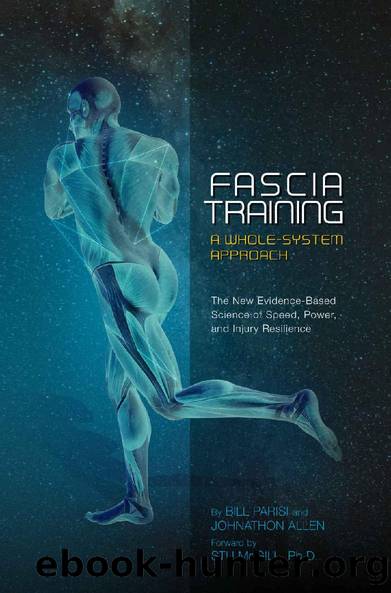Fascia Training: A Whole-System Approach by Bill Parisi & Johnathon Allen

Author:Bill Parisi & Johnathon Allen [Parisi, Bill]
Language: eng
Format: epub
Publisher: Parisi Media Productions
Published: 2019-01-21T00:00:00+00:00
This is why I invited him to the PFSCA conference in Las Vegas to present to the strength and conditioning coaches of the NFL alongside Stu and a panel of other experts on the subject of improving injury resilience and recovery. When I saw Dan enjoying the scenic morning view from the same deck where Stu and I had had our conversation the night before, I grabbed my mug of coffee and wandered over to get his take on the subject of fascia training and how it applies in the real world.
Sunrise at Red Rock Resort in Nevada.
Credit: Johnathon Allen.
âWell, at the end of the day, training is a matter of introducing mechanical factors into the body,â Dan replies from under a somewhat less bushy, less grey mustache. âBut what's happening in the body involves a spectrum of factors. So, if you use a heavy load and go slowly, that's creating certain responses. If you use a light load and go really fast, that's creating other responses. It's the same thing with energy systems. You can't really train energy systems in an isolated sequential manner, because the moment you start moving, all the energy systems are at play. It's a matter of which oneâs predominating in the activity. That applies to muscle systems, fascia systems, and so on. Any movement, just being alive, is creating a training effect. Itâs how we manipulate and shift the stressor of that informationâthatâs when you get into the specifics of training. But I think it would be a misnomer to say that we're just training fascia, because that's impossible.â
Man, what a bullâs-eye. The thing is, we live in a culture where people like to think in terms of absolutes. We want to simplify things and reduce them to the âone wayâ or the âbest way.â But the reality is that you're never just training the aerobic system, or the ATP-PC system, or the muscle system, or the fascia system. Theyâre all being trained all the time. It's a question of what level each system is being trained at. That said, our understanding of how the bodyâs fascia system adapts, tunes, and remodels itself is still a young science with tremendous potential. So, I asked Dan to explain a little bit about his understanding of fascia tissue, fibroblast activity, and how they factor into training programs for different kinds of athletes.
âFibroblasts are part of a communication system within the collagen matrix that's independent but runs in parallel with the central nervous system. A lot of the proprioceptive research thatâs been done is just looking at a central nervous system-only communication system. Where, in fact, it's deeply embedded and entwined into this collagen matrix communication system in which fibroblasts serve as a major antenna, receiver, and speaker.
âThe fundamental principal in all of this is a term called mechanotransduction. So, whether you're doing movement exercises or rehab therapies or what have you, it all circles back to introducing mechanotransduction factors into the system to create change.â
Quick primer
Download
This site does not store any files on its server. We only index and link to content provided by other sites. Please contact the content providers to delete copyright contents if any and email us, we'll remove relevant links or contents immediately.
Tools of Titans by Timothy Ferriss(7815)
Bodyweight Strength Training by Jay Cardiello(7676)
Born to Run: by Christopher McDougall(6895)
Inner Engineering: A Yogi's Guide to Joy by Sadhguru(6441)
Asking the Right Questions: A Guide to Critical Thinking by M. Neil Browne & Stuart M. Keeley(5357)
The Fat Loss Plan by Joe Wicks(4622)
Bodyweight Strength Training Anatomy by Bret Contreras(4472)
Yoga Anatomy by Kaminoff Leslie(4103)
Science and Development of Muscle Hypertrophy by Brad Schoenfeld(3971)
Dynamic Alignment Through Imagery by Eric Franklin(3920)
ACSM's Complete Guide to Fitness & Health by ACSM(3824)
The Four-Pack Revolution by Chael Sonnen & Ryan Parsons(3795)
Exercise Technique Manual for Resistance Training by National Strength & Conditioning Association(3788)
Bodyweight Strength Training: 12 Weeks to Build Muscle and Burn Fat by Jay Cardiello(3781)
Yoga Anatomy by Leslie Kaminoff & Amy Matthews(3740)
The Ultimate Bodybuilding Cookbook by Kendall Lou Schmidt(3708)
Yoga Therapy by Mark Stephens(3574)
Nutrition for Sport, Exercise, and Health by Spano Marie & Kruskall Laura & Thomas D. Travis(3556)
Nutrition for Sport, Exercise, and Health by Marie Spano & Laura Kruskall & D. Travis Thomas(3548)
